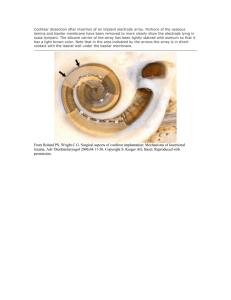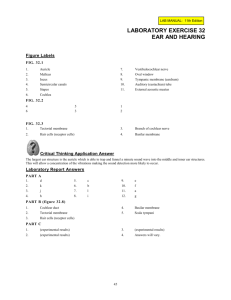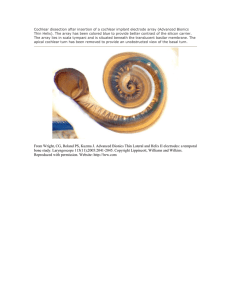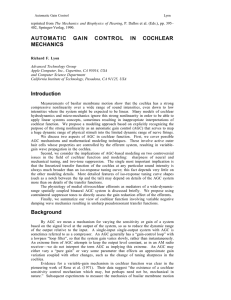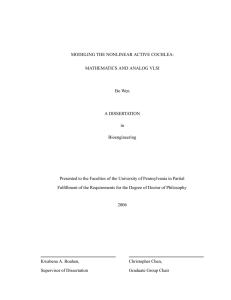Harvard-MIT Division of Health Sciences and Technology
advertisement
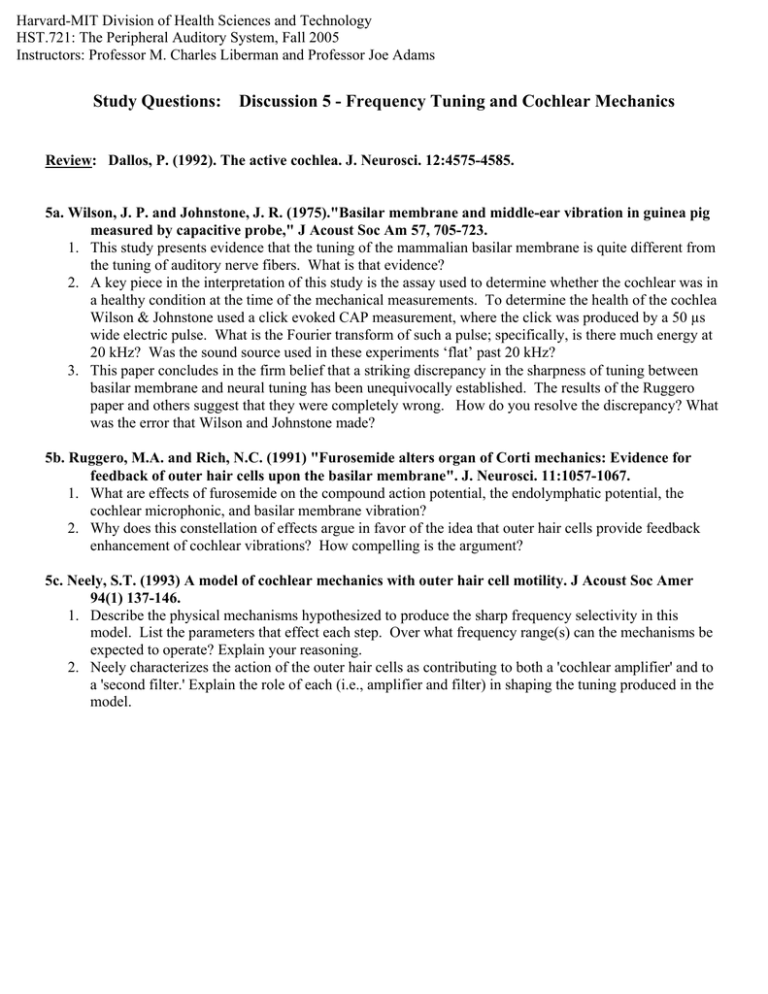
Harvard-MIT Division of Health Sciences and Technology HST.721: The Peripheral Auditory System, Fall 2005 Instructors: Professor M. Charles Liberman and Professor Joe Adams Study Questions: Discussion 5 - Frequency Tuning and Cochlear Mechanics Review: Dallos, P. (1992). The active cochlea. J. Neurosci. 12:4575-4585. 5a. Wilson, J. P. and Johnstone, J. R. (1975)."Basilar membrane and middle-ear vibration in guinea pig measured by capacitive probe," J Acoust Soc Am 57, 705-723. 1. This study presents evidence that the tuning of the mammalian basilar membrane is quite different from the tuning of auditory nerve fibers. What is that evidence? 2. A key piece in the interpretation of this study is the assay used to determine whether the cochlear was in a healthy condition at the time of the mechanical measurements. To determine the health of the cochlea Wilson & Johnstone used a click evoked CAP measurement, where the click was produced by a 50 µs wide electric pulse. What is the Fourier transform of such a pulse; specifically, is there much energy at 20 kHz? Was the sound source used in these experiments ‘flat’ past 20 kHz? 3. This paper concludes in the firm belief that a striking discrepancy in the sharpness of tuning between basilar membrane and neural tuning has been unequivocally established. The results of the Ruggero paper and others suggest that they were completely wrong. How do you resolve the discrepancy? What was the error that Wilson and Johnstone made? 5b. Ruggero, M.A. and Rich, N.C. (1991) "Furosemide alters organ of Corti mechanics: Evidence for feedback of outer hair cells upon the basilar membrane". J. Neurosci. 11:1057-1067. 1. What are effects of furosemide on the compound action potential, the endolymphatic potential, the cochlear microphonic, and basilar membrane vibration? 2. Why does this constellation of effects argue in favor of the idea that outer hair cells provide feedback enhancement of cochlear vibrations? How compelling is the argument? 5c. Neely, S.T. (1993) A model of cochlear mechanics with outer hair cell motility. J Acoust Soc Amer 94(1) 137-146. 1. Describe the physical mechanisms hypothesized to produce the sharp frequency selectivity in this model. List the parameters that effect each step. Over what frequency range(s) can the mechanisms be expected to operate? Explain your reasoning. 2. Neely characterizes the action of the outer hair cells as contributing to both a 'cochlear amplifier' and to a 'second filter.' Explain the role of each (i.e., amplifier and filter) in shaping the tuning produced in the model.

